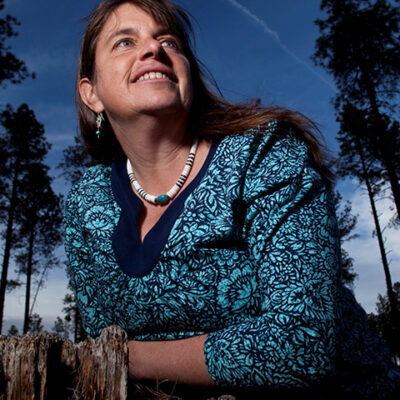 By Mary Stuever
By Mary Stuever
“The call for presentations was unlike any I had received in my professional career. I was invited to present any aspect of my work but asked to consider making the topic selection and the presentation mode in my most authentic voice. I was kind of surprised. The call had come from the Women’s Forest Congress, so I was anticipating they might ask for a “woman’s perspective,” but instead, I was asked to be authentic, to be myself, to be true to myself…I guess that made sense, I am a woman. So my “woman’s voice” would be there somewhere, but it would not be dictated; I would not be told “what” a woman’s perspective would mean to my work…in fact, I wasn’t even being given professional standards, no implication that a PowerPoint would be expected…I could be my creative self even if I did fall back on using the PowerPoint format that I have become so familiar with.
Then I needed to choose a subject. Like all my ancestral women before me, I was not interested in one thing. Like my great-grandmother, I had many skills and interests, though mine were different. Though she knew a dozen ways to keep food from perishing, I had a dozen lenses I could view a forest stand with to help me create a plan. She knew how to rig a buggy and get to town; I know how to dispatch to and from a wildfire and make a difference while I am there. In fact, I am a total generalist – both practitioner and academic; manager and dirt forester; happy working at a multitude of scales. So, I spent a few days thinking about it and finally decided to present on a topic I don’t get asked to talk about near often enough – using various lenses of ecological knowledge to guide forest management.
Since I would be following Robin Wall Kimmerer, a fabulous author, ecologist, scientist, and tribal member, I would include a nod to the importance of traditional ecological knowledge but focus my presentation on plant communities and associated management implications. I would talk about observing…no, wait, I wouldn’t “talk” about it, I would demonstrate observation skills, I would engage the audience in looking for stories, in reading the landscape, I would guide them on a walk in the woods and help them see the woods from my perspective…we would try on lenses…I’d use GIS layers to enhance the virtual “walk in the woods”…I would be sure I was inspiring folks to think for themselves, but also expose them to various tools to inform their thinking.
It almost went the way I planned. What was different was how blown away I was by the whole experience. Each of the other women presenting on this Applied Forestry panel had amazing presentations that were truly authentic, mind-blowing, and unlike the “death by PowerPoint” that I was so used to experiencing at conferences. I found the audience engagement in my presentation was thought-provoking and engaging and will help me see the forest better as well. I felt the power of the Sisterhood of Forest-hers like I had never imagined.”
You said I could dream, right?